
Read Nader’s full letter to the Public Art Fund HERE.
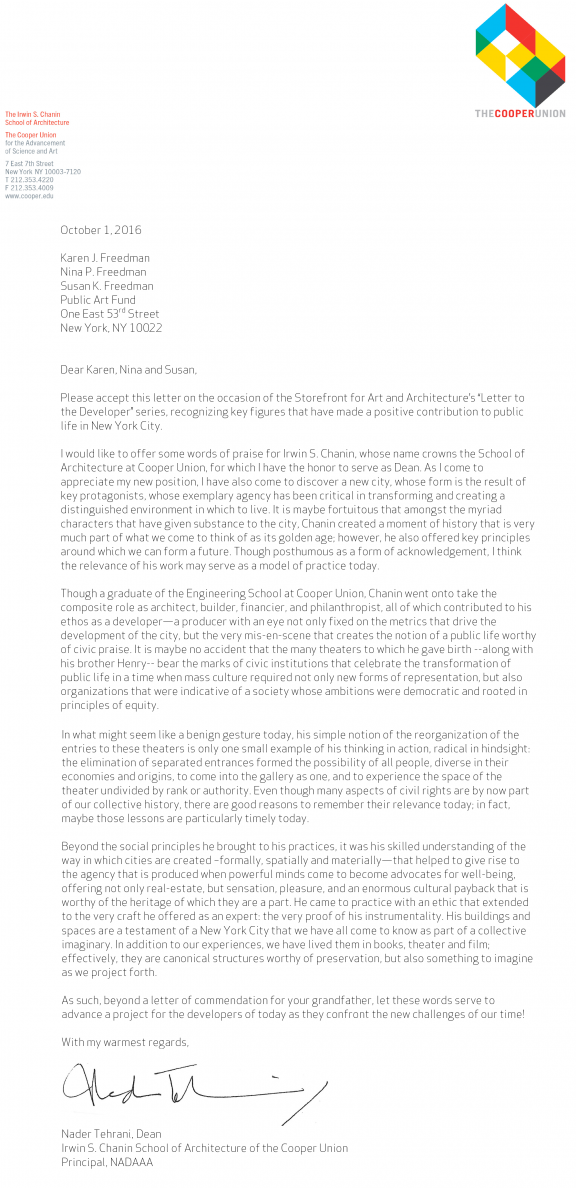
The exhibit opened Tuesday at the Storefront, event photo by Elizabeth Rogers.
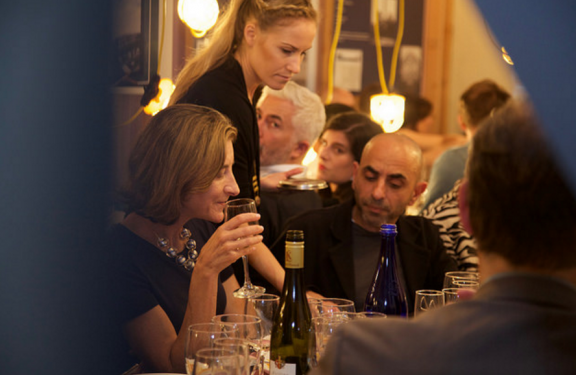
Comments Off on STOREFRONT FOR ART AND ARCHITECTURE:
LETTERS TO THE DEVELOPER

Read Nader’s full letter to the Public Art Fund HERE.

The exhibit opened Tuesday at the Storefront, event photo by Elizabeth Rogers.

Comments Off on STOREFRONT FOR ART AND ARCHITECTURE:
LETTERS TO THE DEVELOPER
Nader writes on OBRA’s work, read the full essay HERE.
Exquisite Corpse by OBRA Architects at Architektur Galerie Berlin, on display through October 22.
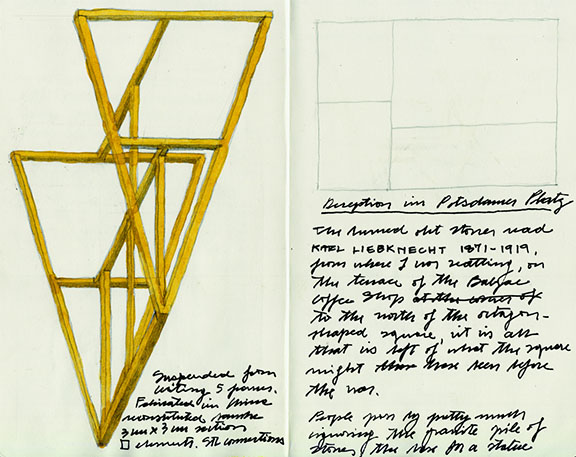
Comments Off on OBRA: THE TIMELESS ANACHRONISM OF TYPE
Comments Off on Facades+ Next Friday
NADAAA’s Amin Tadj, with his partners at VAV Studio, completed their installation, AND, at the Venice Biennale. The installation, a cylindrical gallery, acts as a narrative of work produced by the generation growing up in the 1979 revolution in Iran. Launching practice in the post-war aftermath, VAV Studio gained recognition through collaboration on successful competitions.
“In a broader view, “AND” stands for the way our generation acknowledges its drastically diverse society, and for our mission of conjunction. It represents the eclectic identities of ourselves. “AND” represents our praise for democracy. It introduces the possibility of resisting and negotiating simultaneously. “AND” represents our openness to collaboration, the belief that no one holds the ultimate answer, but rather that the answer can be found collectively. “AND” means that we are just a link in a chain.”
See more instagram photos of the installation here.

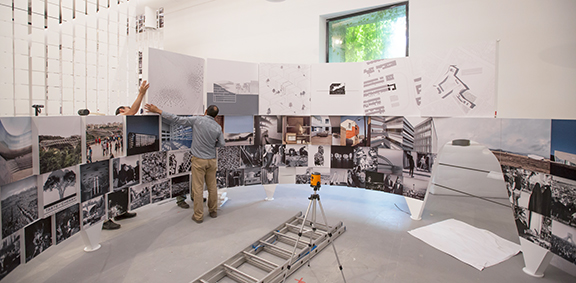
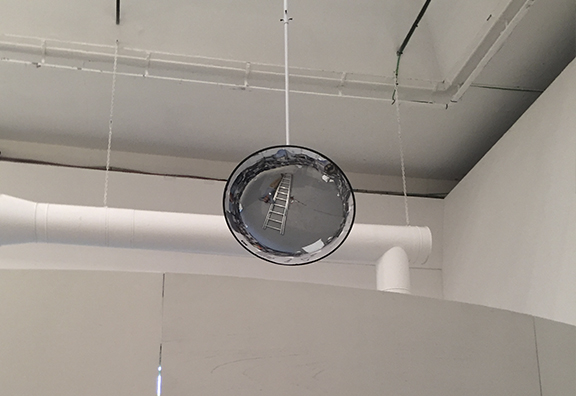
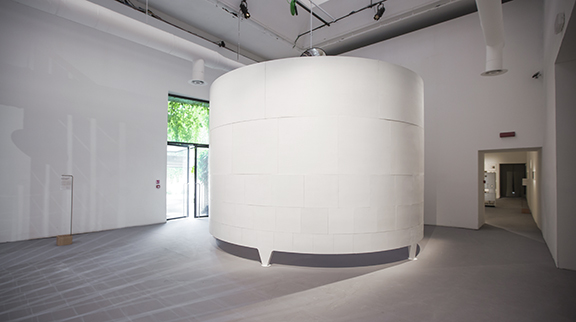
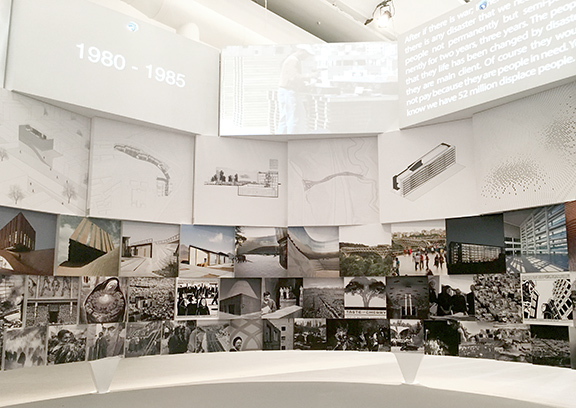

Soheila Beski and Nader in Iran, 2004
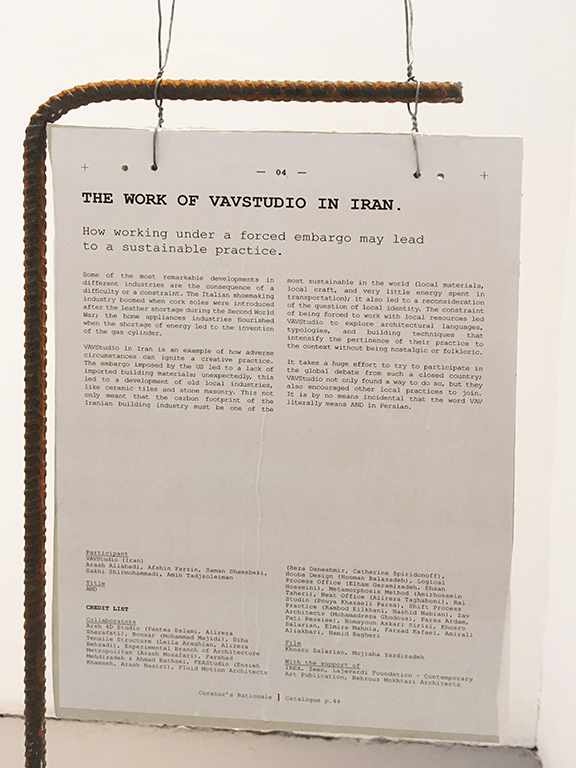
VAVStudio,
Principals:
Arash Aliabadi, Afshin Farzin, Saman Shamsbeki, Sakhi Shirmohammadi, Amin Tadjsoleiman
Design team:
Reza Katebi, Nazanin Mojahed, Mahsa Hosseini, Mahnoosh Nazari
Research Team: Homayoun Askari Sirizi, Khosro Salarian,
Film Director: Khosro Salarian,
Cinematographer and Editor: Mojtaba Yazdizadeh
Graphics: Elmira Mahnia
Fabrication: CARBON Studio,Ali Mirakbari
Web Design: Farzad Kafaei
Contributors:
Arsh 4D Studio (Pantea Eslami, Alireza Sherafati), Bonsar (Mohammad Majidi), Diba Tensile Architecture (Leila Araghian, Alireza Behzadi), Experimental Branch of Architecture Metropolitan (Arash Mozafari, Babak Rashedi, Aqil Bahra, Ashkan Sedigh, Pedram Dibazar, Siavash Ghabraie, Siavash Afshar), Farshad Mehdizadeh & Ahmad Bathaei, FEA Studio (Ensieh Khamseh, Arash Nasiri), Fluid Motion Architects (Reza Daneshmir, Catherine Spiridonoff), Hooba Design (Hooman Balazadeh), Logical Process Office (Elham Geramizadeh, Ehsan Hosseini), Metamorphosis Method (Amirhossein Taheri), Next Office (Alireza Taghaboni), Rai Studio (Pouya Khazaeli Parsa), Shift Process Practice (Rambod Eilkhani, Nashid Nabian), ZAV Architects (Mohamadreza Ghodousi,Parsa Ardam, Fati Rezaiee)
Comments Off on VAV STUDIO VENICE BIENNALE INSTALLATION
The Boston Society of Architects in collaboration with The City of Boston issued an ideas competition last month to gather innovative ideas on the future of the aging Northern Ave. Bridge that links the Financial District to the Seaport District.
The results have been posted here and are open for voting!
Results will be revealed at a party this Wednesday at the BSA at 6pm — register for the event here.
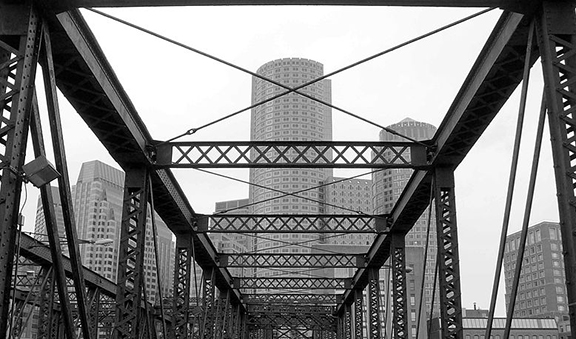
Comments Off on Vote today for the best Northern Ave. Bridge idea!
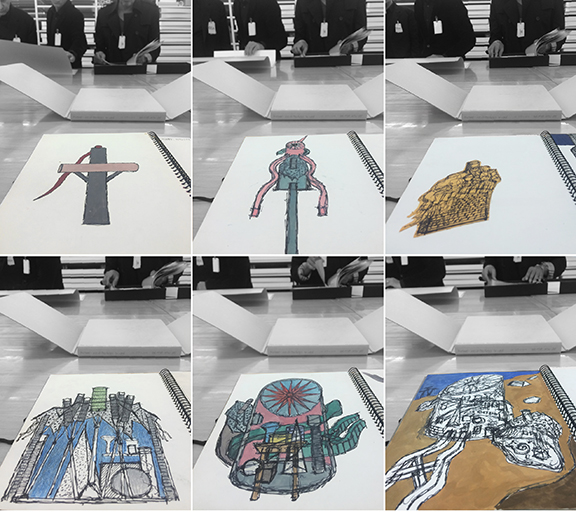
On a recent visit to the CCA to take in the Archaeology of the Digital exhibit I took the chance to look through their large archives, a collection which hosts the work of over 140 artists and architects. The collection includes work by Peter Eisenman, Cedric Price, and Aldo Rossi to name a few. I was struck by two of John Hejduk’s sketchbooks….
Some of these works are available in the CCA’s online archive through the support of the Andrew W. Mellon Foundation. A selection of Hejduk’s work can be viewed full screen here.
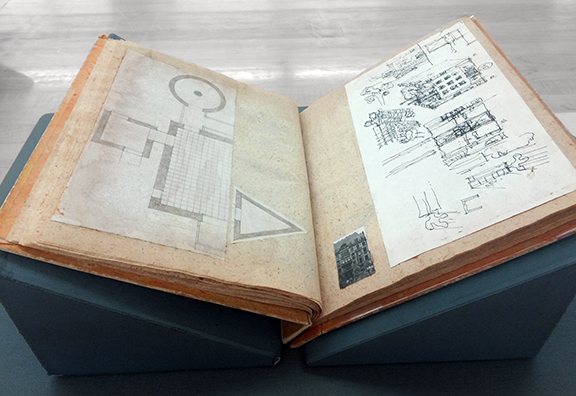
Comments Off on CCA Archives: John Hejduk sketches
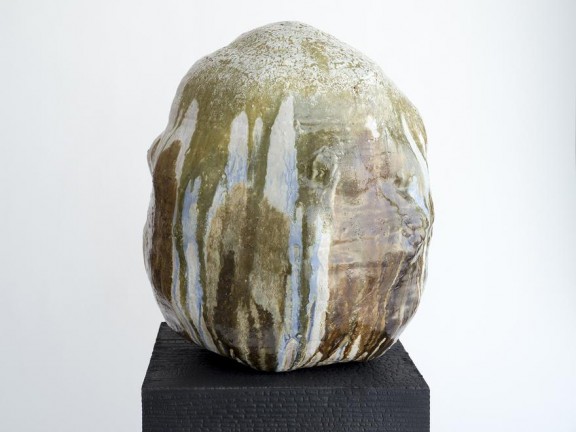
Entering the work of Adam Silverman
Nader Tehrani, 2016
It is always comforting to be able to enter into someone’s work –to make it legible, available, and accessible. And yet, much of the substance of art is to resist easy entry, if only to defer consumption on the one hand, or at least to delay it in the service of the many forms of cognition that art can release. In this delay, one can see a form of redemption, something that can challenge, produce new forms of knowledge, or even just tweak our subjectivity. Coming from the architectural realm, I will invariably slip into interpretations that are biased by my disciplinary predispositions; it may not hurt that Adam Silverman comes from a common background, but that would also limit the reading in the context of his panoramic capacity. The work of Silverman denies the immediacy of access, deferring meaning in any strict sense to capture the attention of its audience in a state of anticipation, beckoning readings of his artifacts in a delicate suspense between objects and the processes that make them come to life.
Silverman emerged from the arts into architecture, but then took a turn towards the world of apparel, and not without significant success. His eventual departure from XLARGE, the clothing company he co-founded, to the realm of pottery and ceramics would seem like a complete reversal of direction. However, if all these disciplines suggest media that are substantially different, they all come together in an investment in “making” as an intellectual enterprise. Maybe the one difference that pottery offered Silverman was the element of personal control: the power to calibrate the content of his work, while patiently building its audience as part of the act of making. If the biographical is not a convincing route from which to map this trajectory, then what it demonstrates, at least, is a protean sensibility that is able to navigate questions of materiality, fabrication and the means and methods that each chapter in his life has brought to him. Though the varied media in which he has worked have their own instrumentality, one can also see the way in which certain themes may be translated from one to the other: namely, the way in which the idea of structure and surface establish a dialogue through each art form. While each medium will offer a radically different set of technical constraints, they come together in an intellectual dialogue that Silverman weaves together across time.
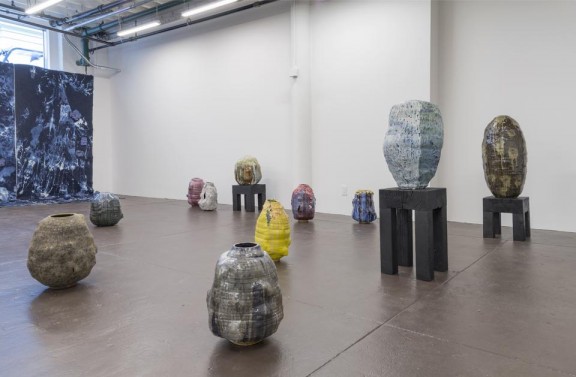
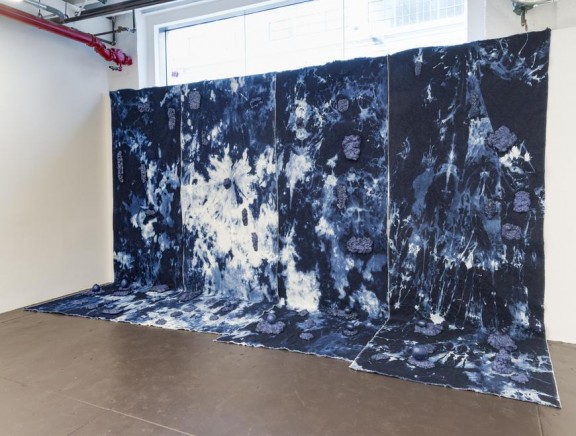
If the discipline of architecture has always required a mediated relationship to the things we build –by way of models, drawings, and mockups, the realm of apparel bridges the gap between the meticulous control of the tailor on the one hand, and the advent of mass production on the other. In his transition to pottery, the entire relation to industry, collaboration and external constraints are somehow reframed, as he, himself focuses on guiding the challenges of building through the internalities of the medium itself—by way of the hand, the kiln, and the material composition of clay as foundation. Effectively, the trajectory brings him back to the irreducible aspects of a medium: spinning, firing, and the post-production aspects of surface manipulation, all elements of production that can become the basis of a patient inquiry.
In pottery, spinning offers the centrifugal inevitability of a figure in the round; it also produces constraints that guide proportion, shape and reach. However, maybe more importantly, it defines the certainty of an objet-type around which Silverman can experiment; it’s platonic clarity and archetypical qualities are, at once, pure, recognizable and incontestable. They neither offer resistance, nor need for elaboration, at least as a point of departure. From there on, it is pure warfare and uncertainty; with mallets, baseballs bats and fists, Silverman unleashes his own force onto the orbs he has handled with such care, pushing them just short of their yield point. Then, added layers of clay, varied in thickness and color are applied onto the bruised foundational shell, melding into its constitution. Silverman produces a tension between the configuration of the surface and the figure of the vessel such that the qualities of the former begin to challenge the structure of the latter.

It is here that his platonic geometries are confronted with the advent of nature, by way of artifice: through a layered process of glazing and firing, Silverman dissimulates the effects of perfection that are an innate part of his craft. Each glaze and chemical admixture has different results, some more or less desirable, and yet they all play a critical part in the game of improvisation, systemic play, and an outcome that has as much to do with the identification of an uncanny artifact as its stealth presence –camouflaged as a geological mass. That nature should serve as an inspiration for art is nothing new, since many eras have grappled with seeing the world through varied lenses, groping with vision through mimesis, perspective, color, and figuration. But if each process involves its own techniques, then they also are in service of a representational aim. Instead, Silverman takes nature as geological substance, and the systemic pulverization of his surfaces, the crafting of sedimentation, and the erosion of the geographic terrain on which he works is not so much in conversation with representational goals (even if that is it’s delightful by-product), but rather a recreation of natural phenomena through an alchemic process. The tension between artifice and nature, then, is one of the curious and productive aspects of his process; in turn, each object can be seen as an index of the experimental protocols that they undergo. In a medium that is, more often than not, part of a “kind and gentle” culture of craft, it is also a refreshing advent to witness the punishment and brutality of a process that can yield aesthetic reappraisal –tipping it into critical discourse.
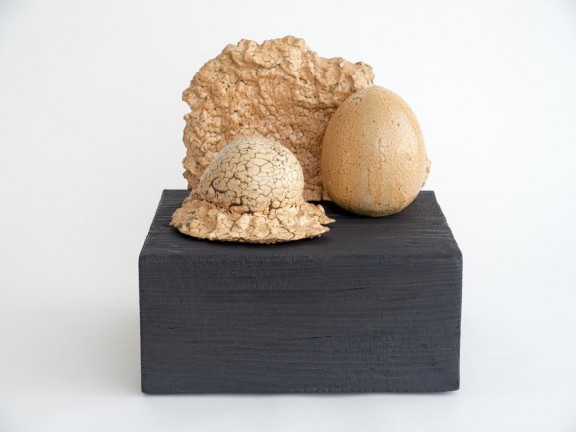
Adam Silverman’s investment is in the process of working his process. He shows no anxiety of getting ‘there’, as his pleasure is precisely in the incertitude of the working path. Though the results may vary and even fail, his greatest moments come at the threshold of collapse. He is neither married to medium, nor to the singularity of discipline; however, he is adopting and internalizing the constraints of each to its maximum potential. As he travels from one art form to another, his ceramic orbs are akin to rolling stones, but with the luxury of gathering the moss of the varied disciplines he carries as part of his kit of intellectual tools.
Read more about Silverman’s current exhibit below.
Comments Off on A ROLLING STONE, PATIENTLY GATHERING MOSS
Adam Silverman’s new exhibit Ground Control will open next Thursday at Friedman Benda in New York. Having worked with Silverman in the past Nader has contributed to the catalogue (a portion of which is shared below) along with Brooke Hodge, deputy director of the Smithsonian’s Cooper-Hewitt, National Design Museum. Friedman Benda is located at 515 W 26TH STREET NEW YORK NY 10001 (212) 239-8700.

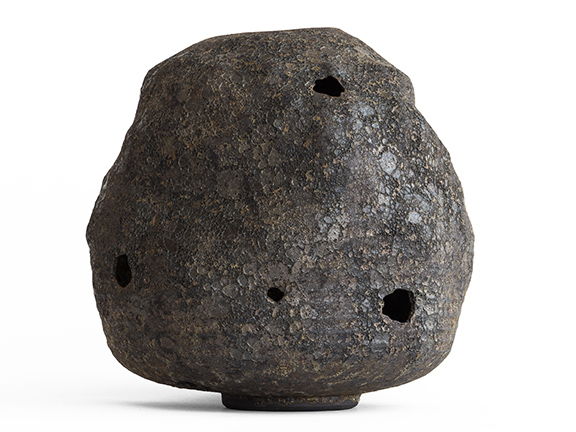
Comments Off on Nader on ADAM SILVERMAN’s ‘GROUND CONTROL’
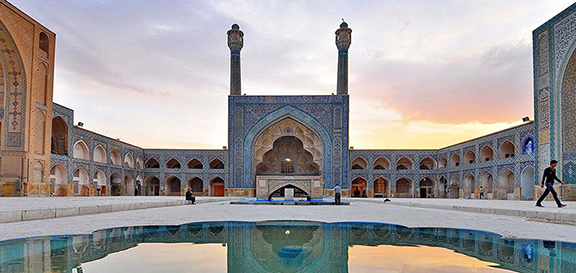
As part of the Van Alen Institute’s Auction of Art + Design Experiences – Nader is auctioning a two-day tour in Isfahan, to benefit The Van Alen Institute. He is joined by other architects including Rafael Moneo, Richard Rogers, Daniel Libeskind, Greg Lynn, Amale Andraos, and Winy Maas offering everything from yacht tours to dinner at The French Laundry. The tour with Nader includes 17th- century heritage sites like the Sheik Lotf Allah mosque and Naghsh-i Jahan.
Bidding will be open for only a few more days!
Comments Off on VAN ALEN INSTITUTE | ONLY SIX DAYS LEFT TO PLACE YOUR BID